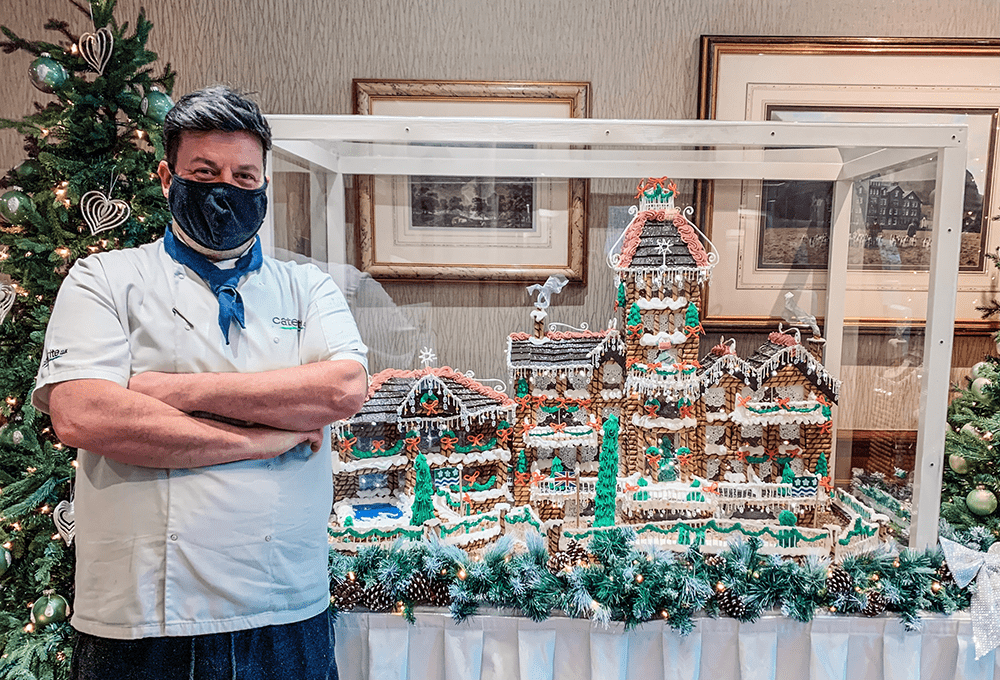
A 14-year-old tradition is still going strong as the Lodore Falls Hotel & Spa in the Borrowdale Valley welcomed its guests back with its spectacular gingerbread replica of the hotel and sparkling Christmas lights displays.
As they step into the hotel’s entrance, guests will be met by the sight of the glittering gingerbread model which is created each year by head chef Shane Hamilton.
The lifespan of the gingerbread replica end each year on New Year’s Day, when it is smashed to pieces by the children staying in the hotel.
Shane said: “This is the 16th year I’ve made the Christmas gingerbread hotel which takes a total of four days to make. Each year it gets bigger and better and I try to make little changes so that guests can have fun spotting new additions.
“This year, I’ve included the addition of a guest on one of the hotel balconies, but in light of current circumstances he’s wearing a face mask. The recipe is one of my best kept secrets, however I can say that this year it took 12 kilograms of flour to create.”
The towering gingerbread hotel has doubled in size in recent years as the Lodore Falls has developed, adding a new pan-Asian restaurant called Mizu and 18 new suites alongside The Falls Spa.
The house features stained sugar windows and real working lights.
Shane spends hours piping the delicate accessories including all the trees, garlands, pot plant, before baking the gingerbread which needs to be overbaked to ensure its crisp and won’t sag.
The Graves family, who own Lake District Hotels Ltd which runs the Lodore, felt it was more important than ever to spread Christmas cheer throughout the hotel, and were determined to continue with the gingerbread house tradition.
Dani Hope, Lake District Hotels marketing director, said: “Each year we go all out for Christmas, and after the last eight months, we wanted to make sure that this December was even more extraordinary than ever before to give people the morale boost they deserve.”
The tradition of making decorated gingerbread houses started in Germany in the early 1800s.
According to certain researchers, the first gingerbread houses were the result of the well-known Grimm ‘s fairy tale Hansel and Gretel in which the two children abandoned in the forest found an edible house made of bread with sugar decorations.
Adorned with succulent gumdrops and candies atop rough German-style gingerbread, these houses bear no direct relation to any other Christmas celebration, despite being a tradition in their own right for hundreds of years. As a result, they have a rather unique, and still delicious origin.
Gingerbread houses are traditionally built using pieces of baked gingerbread assembled with melted sugar, with the roof tiles made of icing or candy and the gingerbread house is placed in a yard decorated with white frosting to represent snow.








